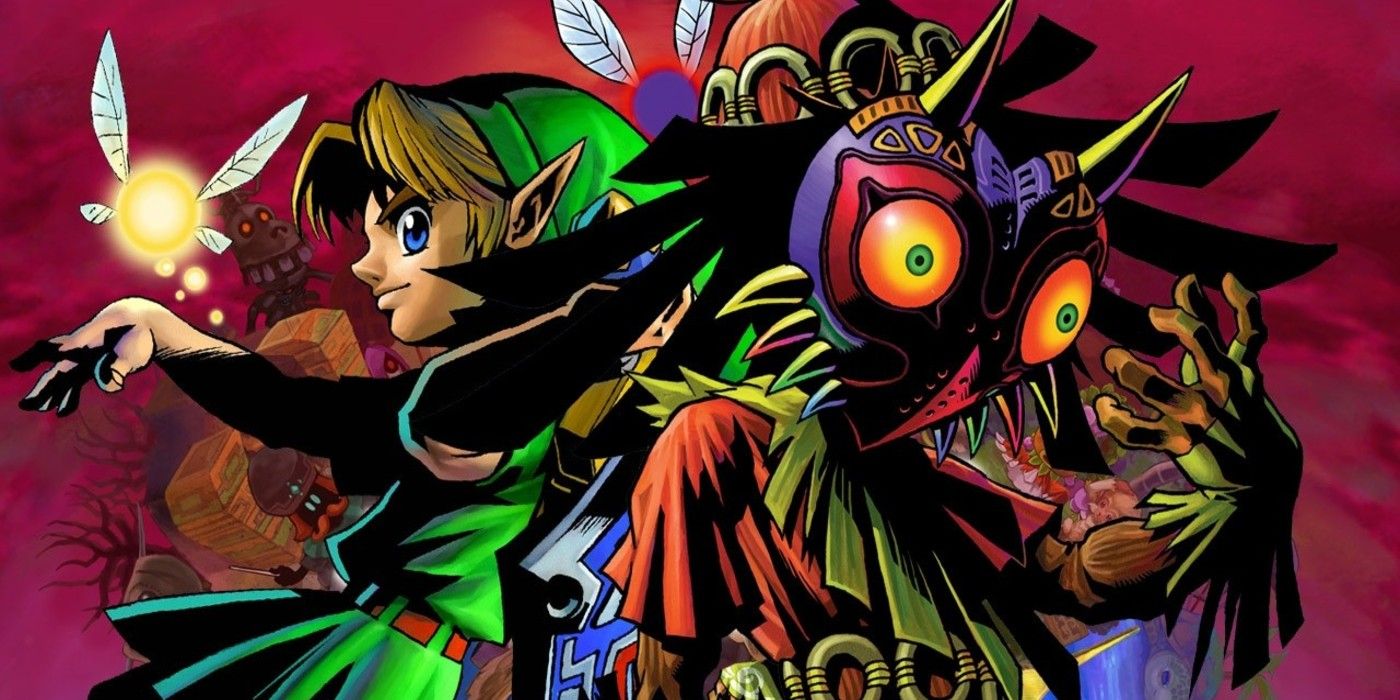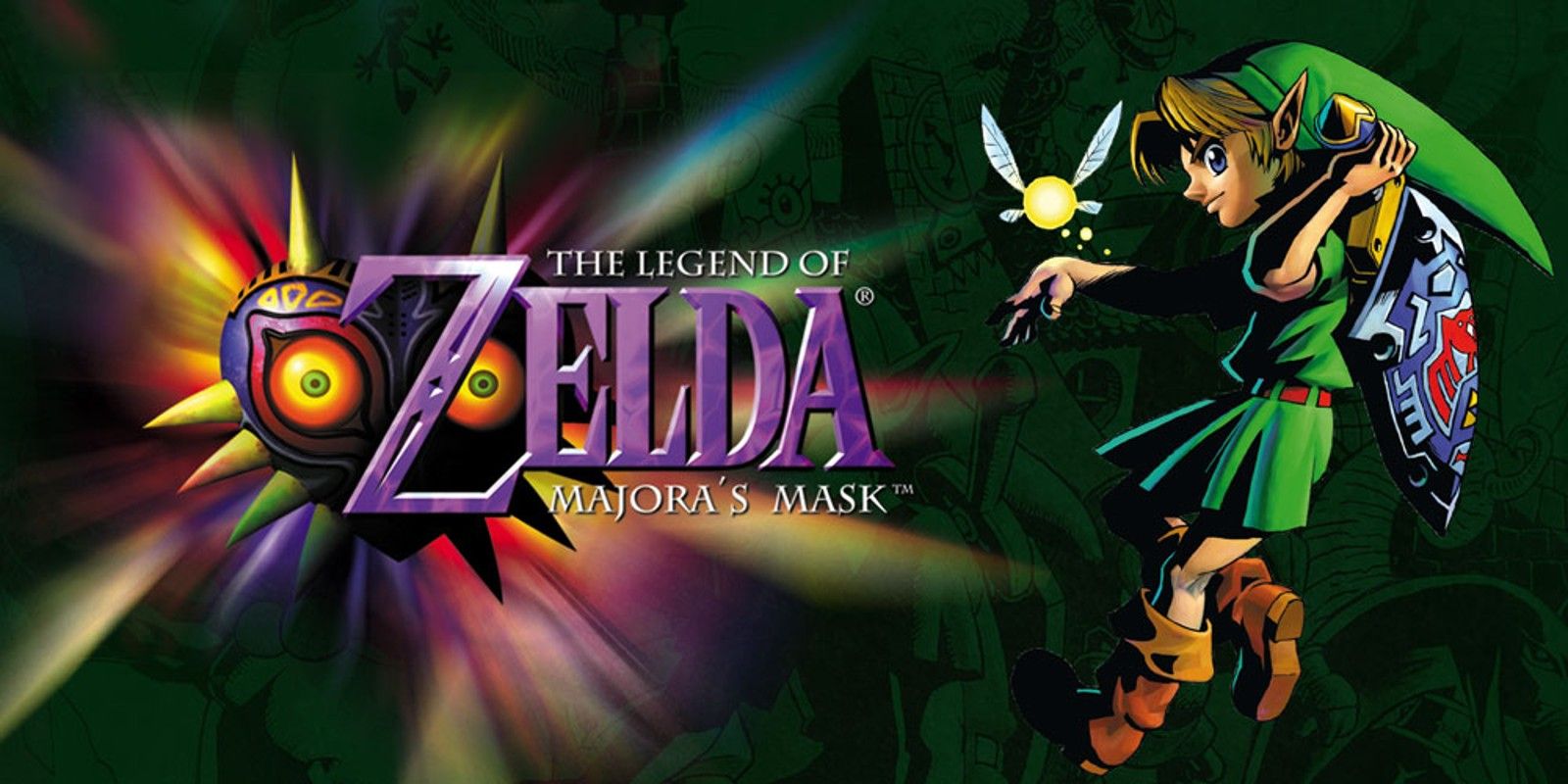It isn’t hard to pin down what makes The Legend of Zelda one of the most celebrated franchises in video games. Brain-teasing puzzles, fantastical creature design and an arsenal of medieval weapons have all made it so. The franchise itself is a marvelous concoction of satisfying gameplay and intriguing lore.
But there’s one entry whose appreciation has had to grow over the years. Majora’s Mask was a direct sequel to the groundbreaking Ocarina of Time on Nintendo 64 and was as different a sequel as it could’ve been. Its story isn’t straightforward, Princess Zelda only appears in a flashback and its three-day structure rubbed some traditional players the wrong way. But it deserves a significant amount of praise in how it presented its unique story and influenced the action-adventure genre.
Released in Japan on April 27, 2000 (and coming to North America on October 26), Majora’s Mask famously had a short development period. Director Eiji Aonuma and his team reused graphical assets from Ocarina of Time in order to complete the game by the deadline. A sequel released so soon afterward while looking almost identical probably didn’t help reception with fans looking for the next Ocarina. While reviews were good, sales weren’t nearly as high.
Majora’s Mask sees Link venturing to the strange land of Termina before he’s jumped and robbed by a masked Skull Kid. The mask feeds on his darkest impulses and bestows untold power; power that he uses to transform Link into a lowly Deku Scrub. Five minutes into the game and players are told they won’t be playing the opening section as the famous Link. But this leads to a variety of gameplay within Majora. As the game progresses, players can also turn into a Goron and a Zora. Each form has unique uses in combat, exploration and puzzle-solving that keep players entertained.
But every Zelda game, for the most part, is fun to play. Characterization and story are where Majora shines through the most. Every NPC, from the most insignificant to the most important, has their own fears, desires and secrets. In Ocarina of Time, Ganondorf’s plot displaces the townspeople of Hyrule and generally makes everything terrible. But in Majora’s Mask, Nintendo sought to explore more personal problems.
There’s the mailman, who is so dedicated to his profession that he struggles with abandoning his place of work. In his last hours, players can find him in the post office writhing on the floor with uncertainty as the destructive moon comes closer. There’s Darmani, the Goron spirit who gave his life in order to protect those he cares for most. Even the villain himself features layers of depth unseen in games at the time. Skull Kid’s feelings of abandonment lead him to steal the mask and lash out. Ganondorf just craves power.
By adding all of these thought-provoking characters and filling the game with side-quests that makes players interact with NPCs, Nintendo made certain that players would build a deeper connection to this world. It wasn’t just about the drive to be victorious over a bad guy. It was about rectifying horrible, personal tragedies and bringing happiness to those around you. Sure, the player is rewarded for their troubles, but there are so many modern games that now fill their playtime with extra content that doesn’t actually add anything to the larger story. Twenty years ago, Nintendo ensured players cared rather than simply grind it out for a reward.
The three-day structure, a common complaint by some at release, plays a major role when it comes to interacting with the world. Different events take place at different times of day, and most NPCs have their own schedules to keep. Therefore, players must choose who they will help. They can obviously reverse time to make a different decision, and there’s an in-game item that keeps track of all character events, but this element of choice has evolved within modern games. Now, players might play massive action-RPGs with storylines that adapt to their choices. In 2000, Nintendo was testing this within one of its most beloved franchises.
The Legend of Zelda series isn’t known for its breathtaking storytelling. Nintendo has mostly relied on classic adventure and fantasy tropes, but it has always been willing to try out new ideas within that formula. Majora’s Mask is the pinnacle of creativity within the Zelda franchise. Since release, it has garnered a reputation as the dark or edgy Zelda. With twisted imagery and storylines based in misfortune, it’s no wonder why. The game could have been just another enjoyable, puzzle-filled experience, but it goes beyond that to be a deep exploration of perseverance in the face of immense stress and trauma. Majora's Mask is a game that has influenced characterization, storytelling and decision making in gaming for the better.



